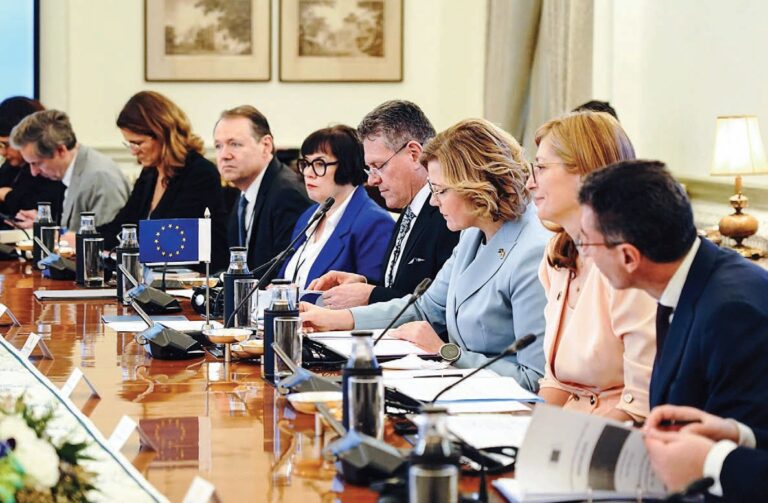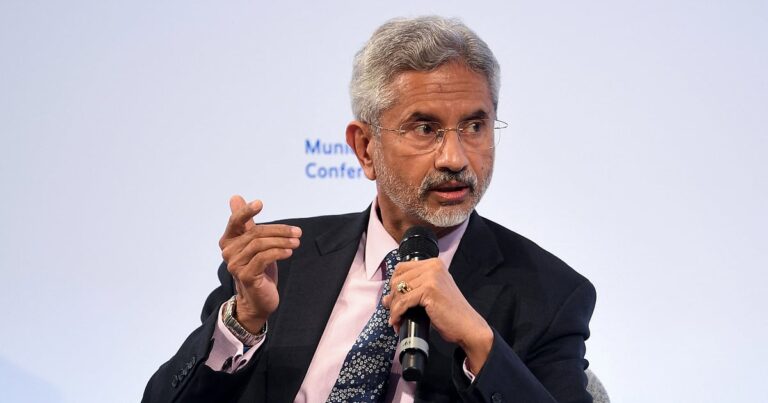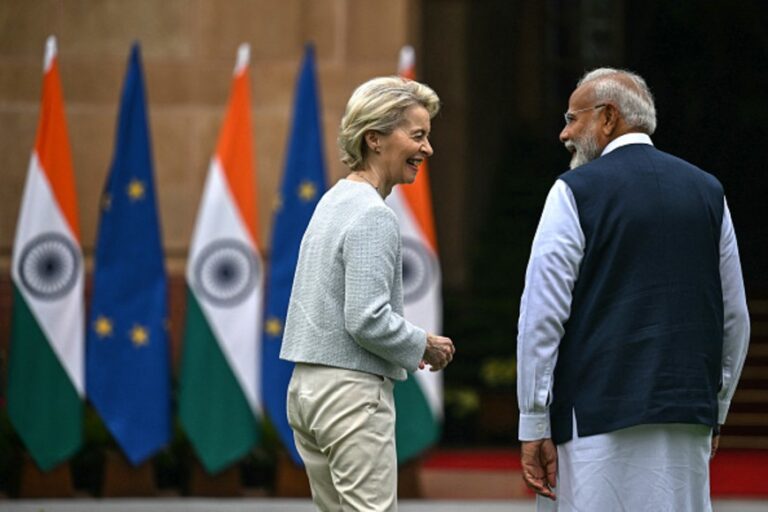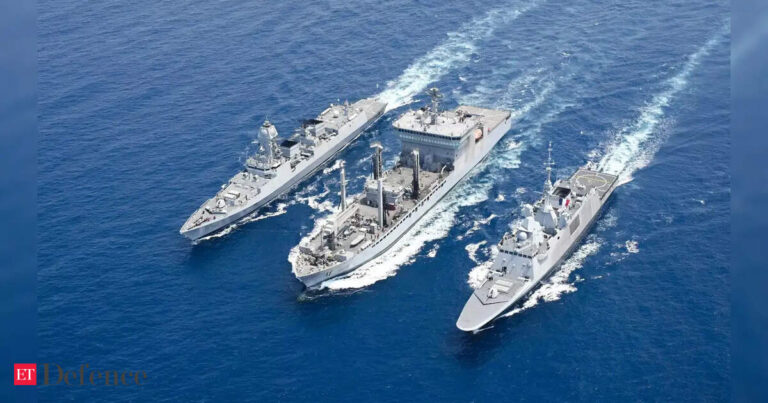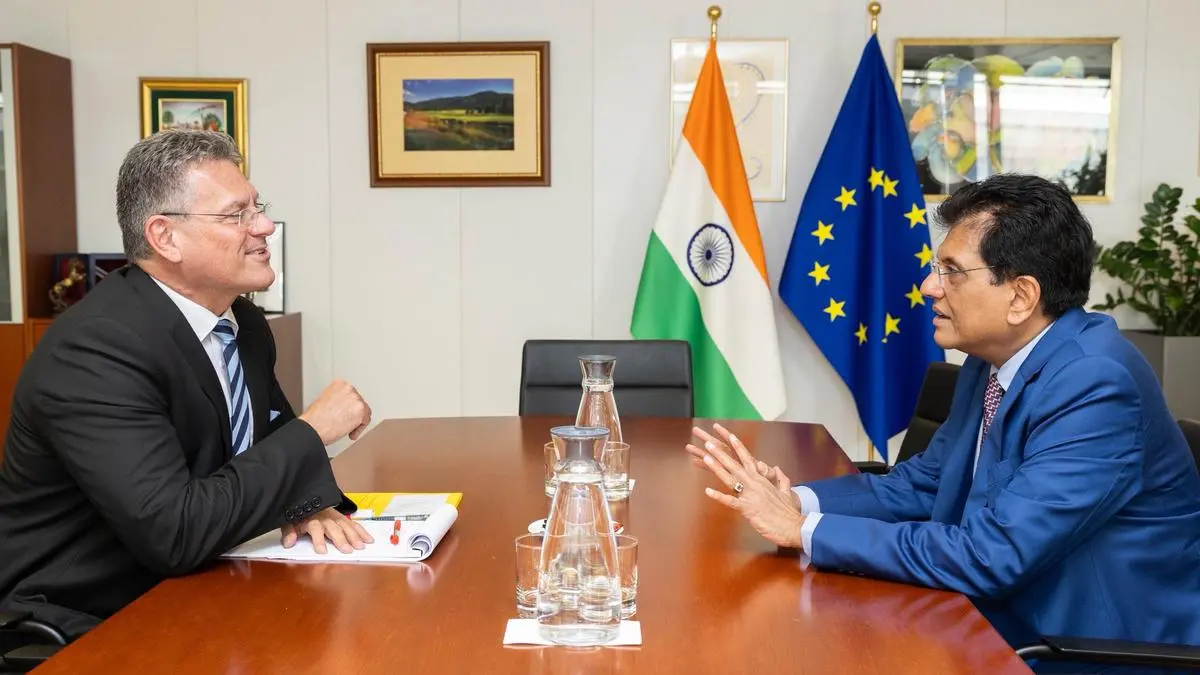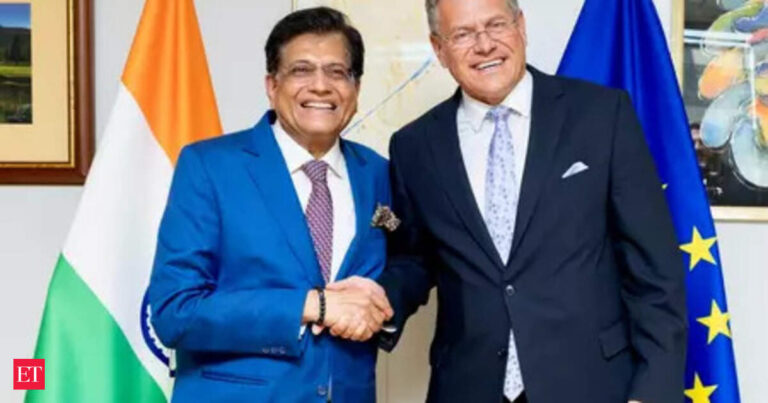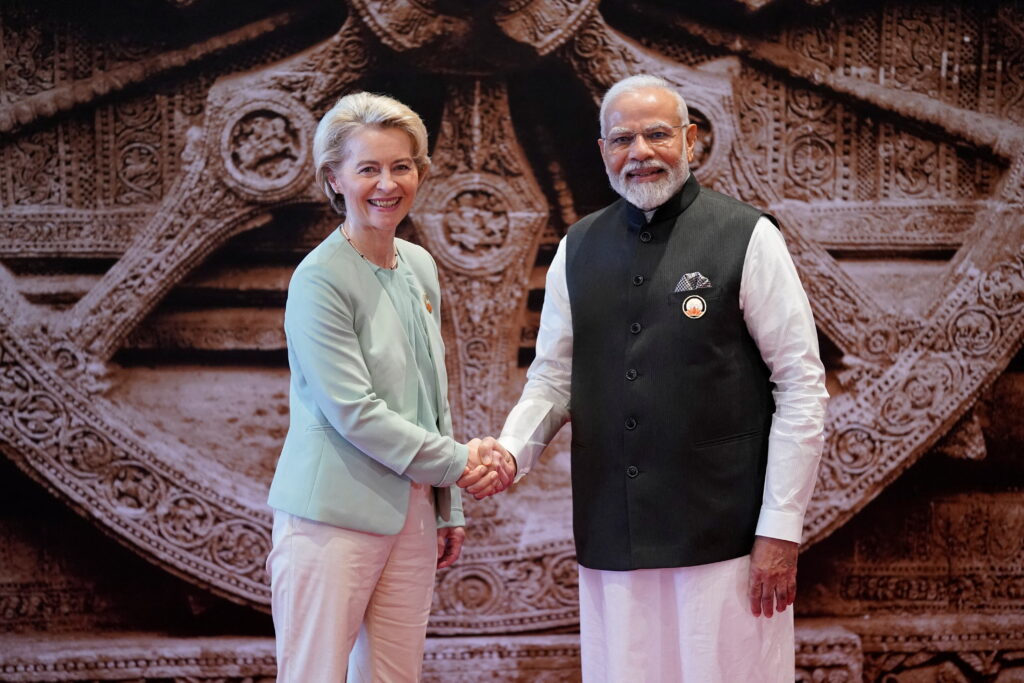
From February 27 to 28, 2025, the president of the European Commission Ursula von der Leyen and 22 of the 27 College of Commissioners of the European Union (EU) embarked on a historic visit to India. This unprecedented delegation aimed to deepen and diversify the strategic partnership between the EU and India, focusing on trade, technology, defense, clean energy and digital innovation. This is the first visit to the College of Commissioners outside Europe since the start of their new mandate in December 2024 and the first visit of this type in the history of bilateral relations of India-EU.
Indian Prime Minister Narendra Modi and Van Der Lyn have reiterated that the EU-Indian strategic partnership has offered strong advantages to their peoples and the broader world.‘ They undertook to raise this partnership at a higher level and to rely on 20 years of strategic partnership India-EU and more than 30 years of the cooperation agreement in India-EC ”.(1)
It was certainly a significant step forward. He will try to shape the new EU-India Strategic Agenda that von der leyen announced in its political directives(2) In July 2024 which was presented to the European Parliament on the day of its elections.
India has increased in the ranks of the EU’s attention list. Balancing China, deepening engagement with Europe and ensuring stability in the world of global change has become shared priorities for India and the EU. The rapid progress of India in digital infrastructure, its new manufacturing support policies and its successful G20 accommodation in 2023 strengthened its global position, adding weight to its engagement with the EU.
On his part, under Prime Minister Modi, India has considerably widened its awareness of Europe. During the last year, Modi visited Ukraine, Poland, Austria, France, Italy and Greece, engaging with European leaders on several occasions.
At the moment, the uncertainty of American policy has become a unifying concern for both parties. Naturally, trade and investment took the scene during the visit, the EU reaffirming its status as the largest trading partner in India. In 2023-24, the bilateral trade in goods increased to $ 135 billion, while the services trade reached a record of $ 53 billion.
The two parties reiterated their commitment to finalize the long-awaited free trade agreement (ALE) by the end of the year, aimed at deepening economic ties. However, negotiations remain complex, with key snack points, including prices, market access and regulatory standards. The EU puts pressure for lower prices on cars and alcoholic drinks, while India wishes to obtain better entry for its textiles, pharmaceuticals and chemical exports on the European market. It can be careful So that the two take a strategic call to break and relieve this logjam. The EU introducing a carbon tax (CBAM) is an additional problem in this riddle.(3) It was not clear from where European confidence to solve this problem emanated.(4)
The Economic corridor of East-Europe India (IMEC) is a major priority for both parties despite the troubles in Western Asia and the uncertainties concerning Israel and the United States. “This can be a modern golden route – directly connecting India, the Persian Gulf and Europe. With a rail link, this will make trade between India and Europe 40% faster. With an electric cable and a clean hydrogen pipeline. And a high speed data cable to link some of the world’s most innovative digital ecosystems. »»(5) said van der lyn during his visit
Discussions at the second ministerial meeting of Trade and Technology Council (TTC), focused on digital technologies, AI, high performance IT and quantum progress. The two parties signed key chords on semiconductors and high performance computer science to meet global technological challenges.
Discussions have also covered the digital public infrastructure of India, data governance and cybersecurity, emphasizing a common commitment to innovation. The memorandum of understanding on semiconductors, increasing supply chains to facilitate the exchange of talents and skills. and the memorandum of understanding between the Bharat 6G Alliance and the EU 6G EU networks and associations of the service industry,, have been positive results.
Despite these intentions, the TTC did not encounter as much frequency and enthusiasm as originally planned. It could have been a glimmer of hope in the darkness of the FTA but now seems to be withered. The EU must contribute more to make it effective.
Expected, clean energy cooperation was a key goal. India and the EU work together on green hydrogen, renewable energies and durable energy systems. The European Investment Bank has promised support for Indian hydrogen projects, strengthening India’s thrust for a green hydrogen ecosystem. EU’s support in initiatives such as international Solar Alliance and offshore wind energy still highlights a common commitment to fighting climate change and to advance sustainable energy solutions for a greener future. The United States moving away from these commitments, it seems to belong to the EU from preventing it from withered and bothering to stay in India to stay attached to its objectives.
DEffence and security links between India and the EU attracted enough attention. The two parties actively collaborate in joint naval exercises, maritime security and the fight against terrorism. The partnership extends to take up broader security challenges, including cyberrencies and the safeguarding of critical infrastructure, strengthening their shared commitment to global security. To be significant, this must develop in defense production and technology sharing and transfers. Production centers in India will offer breakthroughs in larger and profitable marketing. With the EU, worried about NATO’s decline, now engaged in a euro plan of 800 billion euros Europe,, Many new collaboration opportunities in this sector can be identified.(6)
The Indian diaspora plays a crucial role in the deepening of India-EU relations, contributing significantly to European economies, in particular in IT, health care and engineering. The same goes for Indian students and researchers participating in programs such as Erasmus scholarships and Marie Skłodowska-Curie’s actions.
These cultural and academic exchanges promote not only mutual understanding, but also serve as a skeleton of a stronger strategic partnership, improving cooperation in various sectors and guaranteeing a long -term commitment between the two regions.
The collaboration between the EU and India from 2020 to 2025 was guided by the EU-India strategic partnership roadmap, the cooperation strategy in Indo-Pacific and the global gateway strategy. There are more than 50 EU-Indian sectoral dialogues, reflecting the depth and extent of the partnership.
A series of next steps has been accepted, in particular to accelerate the conclusion of the ALE by the end of the year, to revise the meetings with partners to take stock of the IMEC initiative, to engage in awareness of the maritime domain in order to promote shared, coordination and interoperability evaluation, and to prevent the association of the next TTC meeting on the date of cooperation in semiconductors On another date of cooperation in semiconductors.
The time for the EU delegation in India was notable, even if it had been planned for months in advance. Beyond being a commitment of its kind, the visit recognized India as a key voice from the world South, that which the EU considered a crucial partner.
The economic and security dimensions of the EU -Indian relationship, their respective approaches to China and the unpredictable position of the Trump administration – in particular towards Europe – created a very different backdrop and atmosphere from the moment when the visit was initially discussed. It was a more pleasant Europe, which actively seeks to strengthen other strategic partnerships. India and the EU have long been considered stabilizing forces in a multipolar world. However, to remain relevant in a rapid geopolitical landscape, they must go beyond a transactional relationship and act on strategic levels to revitalize their commitment.
If they can do so, they can finally overcome long -standing obstacles and present a stronger partnership model for the world. However, the fundamental question remains: what will be the real catalyst for dynamism between India and the EU? Even if the Ukrainian crisis dominates the attention of Europe, India remains suspicious that the growing influence of China does not receive adequate attention from the United States or the EU
Gurjit Singh is a former Indian ambassador to Germany. He is currently promoting the impact investment movement for the implementation of SDGs in Africa.
This article was exclusively written for Gateway House: Indian Council on Global Relations. You can read more exclusive content here.
Support our work here.
For the authorization to republish, please contact senach@gatewayhouse.in
© Copyright 2025 Gateway House: Indian Council on Global Relations. All rights reserved. Any unauthorized copy or reproduction is strictly prohibited.
References
(1) Declaration of managers: visit of Ms. Ursula von der Leyen, president of the European Commission and the college of commissioners of the EU in India (February 27-28, 2025), MEA, February 28, 2025, https://www.mea.gov.in/bilateral-documents.htm?
(2) Political guidelines for the next European Commission 2024-2029, EURIM, September 17, 2024, https://eugrim.eu/news/political-guidelines-for-ne-next-european-commission-2024-2029/
(3) An Indian official calls the unjust and unacceptable EU carbon border tax, Climate Home News, 1 August, 2024, https://www.climatechangenews.com/2024/08/01/indian-official-calls-carbon-border-tax-unfair-and-unacceptable/
(4) Transcription of the special briefing by MEA during the visit of the president of the European Commission in India, on February 28, 2025, Mea, https://www.mea.gov.in/media-briefings.htm?dtl/39114/transcript_of_special_briefing_by_mea_mea_the_the_visit_of_the_the_president_of_the_europen_commission_to_februy_28_2025
(5) The EU and India strengthen strategic links during the college’s historic visit to New Delhi, European Commission, 28 FEBRUARY, 2025, https://ec.europa.eu/commission/presscorner/dail/en/ac_25_649
(6) Press declaration by President von der Leyen on the defense package, European Commission, March 4, 2025,

